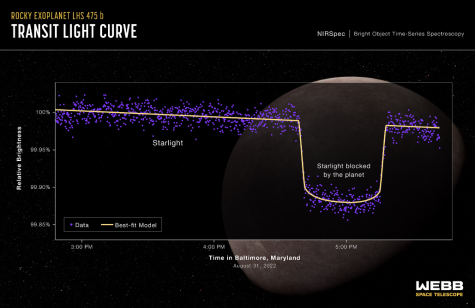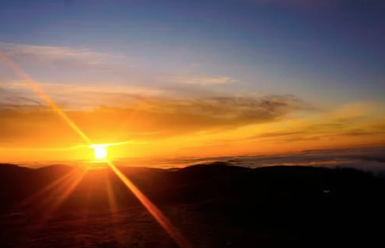TESS Discovers a Secondary Earth-sized Planet in Habitable Zone and Webb Confirms it
NASA’s TESS discovered a secondary earth-sized planet and NASA telescope James Webb is discovering a new perspective and understanding of this earth-like world that sits just outside our solar system.
“Exoplanet LHS 475 b and Its Star (Illustration) (weic2302a)” by NASA, ESA, CSA, L. Hustak (STScI) is licensed under CC BY 4.0.
Feb 1, 2023
Researchers confirm the discovery of an exoplanet that orbits another star. NASA TESS (Transiting Exoplanet Survey Satellite) initially discovered this secondary earth-like planet. The planet has been identified as TOI 700 e and it is orbiting within a habitable zone. Scientists confirm it is 95% earth’s size with a rocky figure.
After the launch of the James Webb telescope, NASA has been able to better identify planets that fall into the habitable zone outside our solar system. TESS discovered TOI 700 b, c, and d in years past. However, with further research, they have discovered the most recent exoplanet TOI 700 e. It has been formally named LHS 475 b.
In an interview conducted by NASA, Emily Gilbert, a postdoctoral fellow at NASA’s Jet Propulsion Laboratory in Southern California who led the work, spoke about the recent discovery.
“This is one of only a few systems with multiple, small, habitable-zone planets that we know of,” Gilbert said. “That makes the TOI 700 system an exciting prospect for additional follow-up. Planet e is about 10% smaller than planet d, so the system also shows how additional TESS observations help us find smaller and smaller worlds.”
While NASA’s TESS made the initial discovery, for the first time telescope WEBB has opened new possibilities for identifying such Earth-sized planets like LHS 475 b.
By utilizing James Webb Space Telescope’s Near-Infrared Spectrograph, scientists have identified that it is relatively 41 light-years away in the constellation Octans. To spot such a distant planet scientists observe changes in light as it orbits a star as shown below.

While scientists have not yet identified the planet’s atmosphere they have made some observations. Jacob Lustig-Yaeger a leader of the research team and member of Johns Hopkins University Applied Physics Laboratory in Laurel, Maryland spoke about the exoplanet’s atmosphere in an interview for NASA.
“There are some terrestrial-type atmospheres that we can rule out,” Lustig-Yaeger said. “It can’t have a thick methane-dominated atmosphere, similar to that of Saturn’s moon Titan.”
There is a chance the planet could have no atmosphere at all. However, there are some atmospheric compositions that have not been ruled out. A pure carbon-dioxide atmosphere has not been eliminated. Lustig-Yaeger spoke more about the topic.
“Counterintuitively, a 100% carbon dioxide atmosphere is so much more compact that it becomes very challenging to detect,” Lustig-Yaeger said.
Every day researchers are revealing more and more about LHS 475 b. Scientists have high hopes for the future discoveries of TESS and James Webb. For further explanation of the earth-sized world, view the illustration video provided by NASA below.






